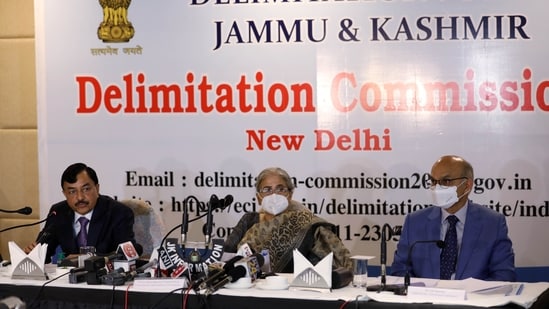KR NEWS DESK
Srinagar, January 11: Kashmir’s Budgam district has got an additional Assembly seat as proposed by the Delimitation Commission, says BJP leader Ram Madhav.
The other six assembly constituencies created in Jammu province have been distributed among five districts with two seats going to Jammu district, and one each to Poonch, Rajouri, Kathua and Udhampur districts.
Madhav criticized former Chief Minister Omar Abdullah for his role in the 2011 Census which showed 7.12 lakh new voters added in Kashmir, a whopping rise of 24.7%, whereas the corresponding rise in Jammu was a mere 7%.
In his article in Hindustan Times, Madhav said the 2011 Census, undertaken in the state under the leadership of CM Omar Abdullah, came under severe criticism from the leadership of Jammu as it showed an unusually high rise of population in Kashmir. “In absolute terms, the population in Kashmir between 2001 and 2011 went up by 1.41 million. This was a 25.8% rise while Jammu registered a rise of 21% during the same period,” he said.
Madhav said, “More suspicious was the increase in voter numbers; 7.12 lakh new voters were added in Kashmir during the same period, a whopping rise of 24.7%, whereas the corresponding rise in Jammu was a mere 7%,” he said.
The delimitation commission has proposed six new seats for Jammu and just one seat for Kashmir, triggering widespread criticism from major political parties in the region.
The Delimitation Commission shall publish the dissenting notes, if any, of any associate member who wants its publication thereof.
Political parties in Kashmir have accused the Delimitation Commission of ignoring the population as the main criteria to delimit Assembly constituencies.
As per the 2011 census, J&K had population of 1,22,67,013 with Kashmir’s population as 68,88,475 (56.15%) and Jammu’s population as 53,78,538 (43.85%).
The total number of Assembly seats in Kashmir was 46 with an average of 1,49,749 per seat while as in Jammu it was 37 with the average population for each seat as only 1,45,365.
So Jammu had nearly 4000 people lesser in each Assembly constituency than Kashmir. Hence, most of the new seats created should have been allotted to Kashmir instead of Jammu, political parties in Kashmir said.
The proposal will take the number of Assembly seats in Jammu to 43 from the existing 37 and to 47 in Kashmir from 46.
Experts say the criticism of the delimitation commission’s proposal is genuine because 56% of the population lives in Kashmir which has been proposed to get only 52% seats in the legislative assembly.
Population share
Kashmir: 56.2% Jammu: 43.8%
Existing seat share
Kashmir: 55 4% Jammu: 44.6%
Proposed seat share
Kashmir: 52.2%. Jammu: 47.8%
Most of the new assembly constituencies created in the Jammu division are to favour the BJP as three seats in Kathua, Samba and Udhampur will be Hindu-majority and each new seat in Kishtwar, Doda and Rajouri districts too have been created in a manner to divide the Muslim voters, locals in Chenab and Pirpanchal said.
Even as Jammu had got more seats than it deserved in the 1996 delimitation exercise, the BJP has often raised the bogey of underrepresentation of the Jammu region and has been pushing for installing a Hindu Chief Minister in the Muslim-majority J&K.
Politicians in Kashmir see the move to “disempower Muslim population by dividing their votes and giving the BJP edge in electoral politics”.
In 2002, following the 84th amendment to the Constitution, the delimitation is to be done in 2026 if not postponed. So, the constitution had imposed a freeze on the delimitation exercise until 2026. But, the BJP-led Union Government repealed the law governing delimitation in the erstwhile state of J&K. It added provision for undertaking the delimitation in the Jammu and Kashmir Reorganisation Act, 2019 which increases the Assembly seat strength to 90 seats excluding the 24 seats reserved for areas under Pakistan’s control.
The delimitation commission headed by former Supreme Court judge, Justice (retired) Ranjana Desai said it has shared the proposed seat allocation at the level of districts with all the members with the request to furnish their views/comments/suggestions by December 31.
The panel said it has categorised all 20 districts in three broad categories giving a margin of +/- 10% of the average population per assembly constituency while proposing an allocation of the constituencies to the districts.“The Commission has also, for some districts, proposed carving out of an additional constituency to balance the representation for geographical areas having inadequate communication and lack of public conveniences due to their inhospitable conditions on the international border,” it said.
The commission said for the first time in Jammu and Kashmir, nine seats are proposed to be allocated for Scheduled Tribes out of 90 seats on the basis of population. “Seven seats are proposed for Scheduled Castes,” it said.




